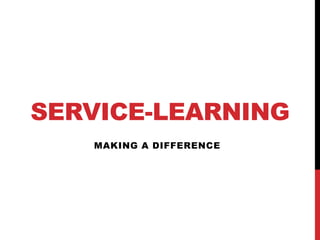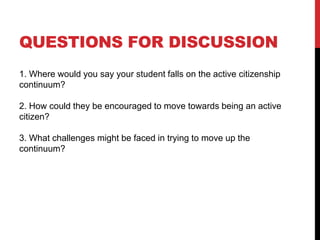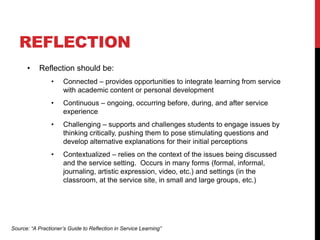The document discusses different types of service programs including volunteerism, community service, service-learning, field education, and internships. It provides examples and discusses the focus and benefits for providers and recipients of each. Service-learning is described as having equal emphasis on service and learning, with equal reciprocity between providers and recipients. The document also discusses components of quality service programs including education, direct service, and reflection, and provides suggestions for getting involved in service both on and off campus through various student organizations and volunteer opportunities.




























